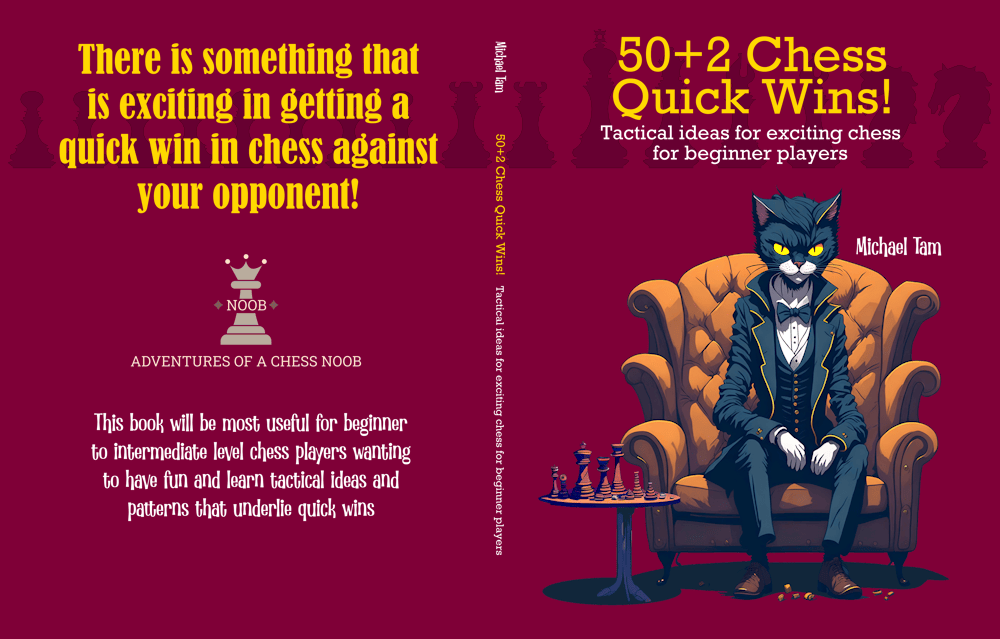
Win and lose with the Bishop sacrifice gambit!
#Bishop'sOpening #ItalianGame #TwoKnightsDefense #ViennaGame #ViennaGambit
Recently, I've had a few games where there was an early bishop capture of the f-pawn, and sacrifice of that bishop. I've dubbed this the "bishop sacrifice gambit" as it is more an idea rather than a specific opening as it can occur in a number of different openings and settings.
Now, the bishop sacrifice is, in some contexts, an objectively great or even brilliant move, like in this game submitted by my subscriber (https://www.chess.com/blog/vitualis/brilliant-vienna-gambit-my-subscriber-goes-super-saiyan). However, most of the time, it IS an objective blunder according to a computer engine. And yet, in the right situation, it is a seductive move, and can create some great attacking chances. Therefore I call this a "gambit".
To make my idea clear, the quintessential example of this "bishop sacrifice gambit" line is probably the "Jerome Gambit" early in the Giuoco Piano line of the Italian. White, after developing their bishop to the c4 square, immediately seems to go mad and captures the f7 pawn on the next move... (1. e4 e5 2. Nf3 Nc6 3. Bc4 Bc5 4. Bxf7+)

Now, this really is as bad as it looks. Stockfish 15 NNUE at depth 40 evaluates it at around [-4]. And yet, White will sometimes win with this. I've personally lost against the Jerome Gambit!
I'm going to cover a couple of games. In the first game, my opponent uses this bishop sacrifice gambit against me, and their attack fizzles out and fails. In the second game, I use this attack against one of my opponents and capture an attack initiative that allows me to win the game. I'm going to try to glean some insights from these two games that perhaps will identify the ingredients that might make it successful. I will say upfront, however, that the attack is unsound, and it will most likely fail against higher rated opponents, or, in games with longer time controls where more depth of thought is put into every move!
Game 1: https://www.chess.com/game/live/55831491881
In the first game, I had the black pieces. I'll focus mostly on the opening, which is where this bishop sacrifice attack occurs. My opponent starts with the Bishop's Opening (1. e4 e5 2. Bc4). As per my usual practice, I try to transpose the game into familiar territory, specifically, a Two Knights Italian where I know some tricks. In this game, it was successful (2... Nc6 3. Nf3 Nf6) - I first developed the queen's knight, and White developed the king's knight in response. I develop my other knight and we're basically in the Two Knights Italian.
My opponent now plays for the open variation (4. d4), but again, I know how to respond. After a pawn trade (4... exd4) we transpose into the Dubois-Reti Defense of the Scotch Gambit (https://www.chess.com/blog/vitualis/how-to-defend-against-the-scotch-gambit) which is good for Black if you know how to play the position! Against the e-pawn advance you must counterattack with the d-pawn (5. e5 d5) and now there is a good chance that White will make a mistake in this complex position with Black coming out ahead (and at worst, achieve an equal position).
Two moves later, my opponent sacrifices their bishop (7. Bxf7+). Stockfish hates it [-5.87], but there is a potential logic to the move. The sacrifice comes with check, so Black loses the right to castle. The king is stuck on the kingside of the board, with a potentially damaged pawn structure. And Black will probably need to waste tempo dealing with the forced king move.
However, in this attack rapidly fizzled out for my opponent. Why? Simply, I could capture the bishop (7... Kxf7) and after the white knight jumps forward with another check (8. Ng5+), there's nothing left. White's knight is off side, isn't threatening anything else, and isn't supported by another other pieces. A couple of moves later, the knight is forced to retreat (10. Nf3) when threatened by a pawn and I'm pretty much just up material and have a development advantage. This means my strategy is clear - force piece trades into an endgame where I'm up a piece. The game took 51 moves to finish but my opponent has no ability to equalise.
Game 2: https://www.chess.com/game/live/55634372913
In the second game, I had the White pieces and played a Vienna Gambit where my opponent declined with Nc6 (1. e4 e5 2. Nc3 Nf6 3. f4 Nc6). This automatically places me at an advantageous position, especially from the point of view of development as I get to force one of Black's knight back to it's starting square. On move 9, I decide to throw caution to the wind and play the bishop sacrifice gambit (9. Bxf7+)!
Stockfish hates the move [-2.08] but I had a sense that my opponent could probably refute it with accurate play. However, I had also a strong sense that I might get a power attack! Firstly, after the king captures the bishop (9... Kxf7), it loses its right to castle and is now on the fully open f-file! My next move, short-castles, places my rook in control of that f-file. And this was my strategy - to place overwhelming pressure down the f-file and the f7 square. Black must respond immediately as a potential next move with my knight could come with double-check!
I continued my plan, advancing my knight to put a second attacker on f7 (11. Ng5) and then putting my queen on the f-file with my rook to form a battery (12. Qf3). Stockfish really dislikes this plan [-5.21] as it can see complex counterattacks that that refutes it. However, the simplicity, directness, and immediacy of the attack with a seeming checkmate around the corner makes it very difficult for my opponent to not be drawn into my attack lines!
My opponent attempts to counterattack with their queen (12... Qxd4+), which Stockfish approved of. However, after I block and counterattack their queen with my bishop (13. Be3), they lose their nerve and retreat their queen (13... Qd7). Psychologically, this makes sense! With the king's safety at stake, moving the queen away from the defence of the king doesn't seem right! However, this results in my opponent getting their queen chased while allowing me to further develop and bring additional attackers. They blunder on move 14 (14. Rad1 Qe7) with Stockfish now giving me a commanding advantage [+3.33]. On move 17, they lose their queen (17. Nxd6+) and the game is pretty much finished [+11.6]. A mating net ensures with the king drawn into the middle of the board.
Summary
So, what potentially makes the "bishop sacrifice gambit" work? There must be a follow up attack that can take advantage of the king being stuck on the kingside, with the loss of their f-pawn. In this game, I had two immediate attackers on the king (knight and rook) with an almost immediate third attacker in the queen. Black could defend against the attack, but not with a simple direct defence of marshalling sufficient pieces. It was only possible with a dynamic counterattack, which is difficult to see, find, and play. In the first match, my opponent only had one other immediate attacker after the sacrifice, the knight, and after a rebuff, there was nothing left. The consequence of this was that they lost material and tempo with the failed early attack.



